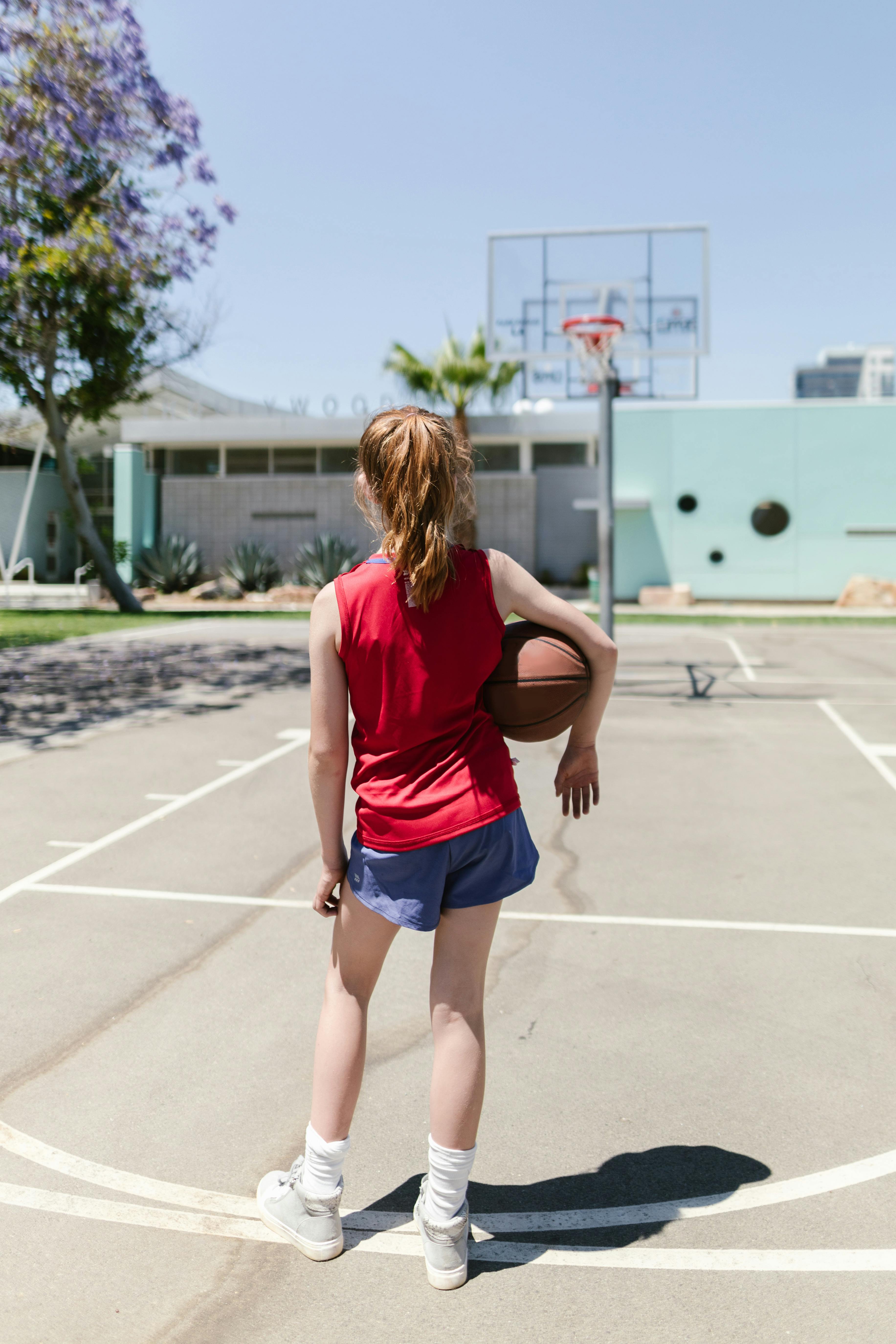Senegal Youth Sports: Step-by-Step Guide for Community Success
Let’s be honest: most people who dream of building a youth sports program in their town or neighborhood in Senegal don’t start out with a fancy playbook, a big budget, or an army of volunteers. What they do have is genuine passion, hope, and a little dose of practical worry—especially about where to even begin. I know, because I’ve been there. Last year, working with a local community outside Dakar, I watched a handful of parents and young leaders struggle to launch a soccer league that, over time, grew from six barefoot kids to nearly 100 enthusiastic players. It didn’t happen overnight, and it certainly didn’t happen without a lot of missteps. Frankly, the first attempt flopped—but the lessons we learned, the conversations we shared, and the local partnerships we forged became the DNA of a successful, sustainable program. That’s what I’m here to help you build.
So—if you’re sitting at your kitchen table, coffee in hand, wondering how to turn your desire for better youth sports opportunities into action in Senegal, this roadmap was crafted for you. We’ll tackle everything: getting started from scratch, navigating local regulations, recruiting volunteers and sponsors, making the most of limited resources, and—most importantly—creating a program that’s inclusive, fun, safe, and truly transformative for young people. Whether your focus is football (soccer), basketball, handball, or even track and field, the principles apply. Throughout, you’ll see references to real-world data, trusted sources, and local success stories—plus a bunch of candid, practical reflections from my own experience.
Why Youth Sports Matter in Senegal
Start with this question: Why do small community sports programs matter so much in Senegal? It’s tempting to answer with the obvious—sports keep kids active, out of trouble, and teach teamwork. Sure, but it goes deeper. According to the UNICEF, community sports are among the single most effective drivers of youth development globally1. These programs teach resilience, discipline, leadership, and build lasting social capital—which, for Senegalese youth facing economic challenges, limited educational infrastructure, and social pressure, are nothing short of transformative2.
Senegal’s youth population (ages 0-24) makes up over 60% of the country, one of the highest youth demographics in West Africa. The government invests heavily in youth sports as part of its national development strategy3.
Back in 2018, I joined a regional workshop on sport and social change in Saint-Louis. Every single community leader there—teachers, police, nonprofit directors—spoke about football as not just a pastime, but a glue holding neighborhoods together. What struck me most was how these programs reduce violence, offer girls a place to shine, and, when properly supported, open doors to educational opportunities and scholarships4. Realise that there’s no single right way to “do” youth sports; cultural context, local realities, and even seasonal traditions all play a role.
Preparing Your Community: Laying the Groundwork
Okay, here’s where most beginners trip up—jumping in with a “Let’s make a club!” energy but missing the groundwork. The biggest mistake I see? Skipping the step of community consultation. Trust me: skipping local input equals low turnout, quick burnout, and lack of ownership.
- Host an introductory meeting. Invite parents, teachers, community leaders, and—crucially—youth themselves.
- Ask open-ended questions. What sports do young people actually want? When are they available to play?
- Identify existing resources: Is there a field, court, or school gym? Who “owns” it?
- Map barriers: Money, equipment, transport, cultural norms, parental concerns.
Funny thing is, in rural Senegal, I’ve found a single teacher can mobilize 60 kids for football but struggle to get 12 for volleyball—why? It’s cultural. What I should have mentioned first: don’t assume you “know” the best-fit sport before consulting. Oh, and another personal learning—the soccer program we started doubled its female participation only after a women-led planning committee took charge. Without those perspectives, the boys would have hogged all the play slots.
Honestly, this phase is slow—and sometimes awkward. People will disagree. Budgets will look thin. But given time, genuine listening builds trust, and trust builds momentum. If you get only one thing right in the first month, make it real community participation.
Building Your Team: Volunteers, Coaches, and Stakeholders
Moving on—once you’ve got a core of community support, you need a team. Not just sports coaches, but people who can teach, listen, organize, and (often) troubleshoot. The truth is, Senegal’s strongest youth programs rely on local volunteers—teachers, parents, retired players—and at least one “official” community leader who can help open doors5.
- Define core roles. Consider: Program Coordinator, Coach, Equipment Manager, Safety Lead, Parent Liaison.
- Start with whoever is available, but clarify each role at the very first team meeting. Secretly, this is where most confusion (and drama) begins if you don’t.
- Recruit locally first—ask teachers, scout leaders, local athletes. These people know the kids and understand area challenges.
- Consider training. Sometimes, even basic “How to coach kids safely” workshops can be game-changing.6
A mentor of mine, Bamba Gaye, always said, “Good programs aren’t built by superstars; they’re built by neighbors.” He was right. Actually, let me clarify—what matters most is reliability, not technical skill. If someone consistently shows up and cares about the kids, you can teach the rest.
关键洞察
A strong volunteer network drives program sustainability. Rotate responsibilities to prevent burnout and recognize contributions regularly. Genuine appreciation builds loyalty and growth.7
Program Design: Structure, Schedule, and Activities
Here’s where a lot of well-meaning programs stall: they try to do too much at once. In my view, simplicity works best (especially in Senegalese communities balancing school timetables, farming seasons, and religious events). Start with one main sport. Choose an easy-to-access location. Offer consistent practice times—even if it’s just Saturdays or after school.
- Create a simple weekly schedule—visible and shared with all participants.
- Plan for seasonal activities: dry season means more outdoor games; rainy season requires indoor adaptations or table games.
- Include both skill-building and fun competitions. Mix in team-building games, leadership workshops, or cultural storytelling.
- Ask for consistent feedback from youth participants at least once per month.
I’ve consistently found the programs that thrive are those that regularly adjust based on what youth say, not just what adult planners envision. Think about this: when I first helped set up a basketball club, the kids were mostly interested in freestyle trick shots. We changed the weekly schedule to include “freestyle showcase days”—and attendance tripled.
| Sport | Seasonal Adaptation | Main Age Group | Typical Barriers |
|---|---|---|---|
| Football (Soccer) | Dry/Rainy: Field vs. sandlot | 8-16 years | Equipment, safe field |
| Basketball | Outdoor/Indoor | 10-17 years | Court access, coaching |
| Handball | All seasons | 11-16 years | Equipment, awareness |
What really strikes me—there’s no single “best” structure. Your program should reflect your community’s unique rhythms and interests. Let participants choose, within reason, which activities to add. Oh, and I need to revise my earlier point: if school holiday schedules shift, don’t hesitate to adapt the program on the fly.
On second thought, sometimes (especially in rural areas), the hardest part is making sure parents feel comfortable about safety and inclusivity. Address these concerns directly at every planning session and celebration event. That genuine transparency means parents become allies, not just passive permission-givers.

Funding and Sustainability: Smart Steps for Beginners
So, how do you fund a grassroots sports program in Senegal—especially when starting out with very little? Here’s the hard truth: nearly every beginner program will struggle financially for the first year8. That’s normal. Actually, what most don’t realise—starting small unlocks resourcefulness, creativity, and community support. Instead of chasing big sponsors right away, focus on “micro-funding” strategies.
- Ask each family to contribute a small, optional participation or equipment contribution (nothing that would prevent access).
- Hold community fundraisers: cookouts, car washes, cultural festivals, friendly matches.
- Solicit local business sponsorships—often simple donations of gear or refreshments go a long way.
- Apply for small public grants through Senegal’s Ministry of Sports9 or international NGOs focused on youth empowerment.
Budget Tip
Track revenues and expenses openly. Use a notebook or simple shared spreadsheet. Monthly public reports build trust, prevent misunderstandings, and help plan ahead.10
Funny story—one program I worked with in Kaolack nearly folded over a missing ball, until a local fruit vendor quietly donated a new set. Turns out, community pride is a powerful (and unpredictable) funding source.
Concerning sustainability: Don’t aim for rapid growth. Instead, prioritize consistency, transparency, and celebrating small wins. In my experience, every public event—no matter how humble—cements the program’s value and invites new supporters. On second thought, what I should have mentioned is to avoid debt or risky financial commitments; let organic growth lead your investments.
Measuring Impact & Evolving Your Program
Ready for a reality check? Growth isn’t just about numbers. It’s about meaningful impact. In Senegal, program longevity depends as much on participant well-being and community reputation as it does on team size or tournament wins11.
- Track participant attendance and engagement each week.
- Collect feedback through simple questionnaires—or informal interviews with kids and parents.
- Note local outcomes: improved attendance at school, reduced complaints about fighting, increased parent involvement.
- Present results at community meetings—invite dialogue, showcase real stories, and be transparent about challenges.
I go back and forth on the value of “formal” monitoring, but truthfully, it’s the personal stories that drive local support. Last month, a young girl named Khady earned a scholarship after three years in a regional handball program. Her story became the spark for hundreds of parents in her town suddenly believing in the power of community sports12.
| Impact Indicator | How to Measure | Frequency | Reporting |
|---|---|---|---|
| Attendance | Participant sign-in sheet | 每周 | Monthly community meeting |
| Skill Progress | Skills-development checklist | Quarterly | Oral report |
| Community Support | Feedback surveys | Biannual | Social event/presentation |
One last note: If you sense burnout or slipping enthusiasm, pause and assess. Sometimes programs need intentional resets—even taking two weeks off to regroup and reconnect. The more you listen, the more you’ll learn what works.
Real Senegalese Success Stories
Ever wonder what separates the programs that thrive from those that vanish after a few months? For me, the answer lies in stories—stories of ordinary people making extraordinary change. One quick example: the football initiative in Thiès. Back in 2015, three volunteers with no formal training used school holidays to run daily practices. The kids who played, many of whom came from challenging backgrounds, not only improved athletically but also increased their school attendance rates by 30% over two years13. The community took notice, teachers got involved, and local businesses offered ongoing support. Now, seven years later, the program boasts inter-city tournaments and alumni who give back as volunteer coaches.
Another standout: a girls’ basketball league in Dakar, founded after a single mother and a retired player teamed up to challenge gender norms. They had almost no funding—just secondhand equipment and the city’s smallest school yard. Why did it work? Consistent encouragement, visible role models, and a culture of “everybody belongs.” They even brought in local nurses for health checks—a decision that boosted parental trust and kept attendance steady in the rainy season. Let that sink in for a moment—a grassroots program leveraging health, inclusion, and local culture for real impact.
Takeaway
Sustainable youth programs in Senegal succeed when driven by local relationships, adaptive leadership, and open communication. The method is less important than the mindset: growth through collaboration, patience, and listening.
Your Action Plan & Next Steps
Now for the practical wrap-up. Whether you’re just getting started, or ready to scale up a fledgling initiative, here’s a simple roadmap to anchor your efforts. It’s not perfect (heck, no roadmap ever is), but it reflects real-life learning from years of trials, restarts, and community feedback.
- Start small, with a community meeting. Build trust from day one.
- Define roles transparently. Even at the smallest scale.
- Set a simple schedule and adapt as needed. Don’t be afraid to change it up.
- Prioritize safety, inclusion, and transparent finances.
- Celebrate every milestone—big or small. Public recognition matters.
- Track impact. Not every metric needs to be scientific—stories count.
- Stay flexible. Invite feedback, switch tactics, and adjust for seasons and shifting needs.
One more thing—remember that no sports program grows in isolation. Keep connecting with regional networks: teachers, non-profit groups, other sports clubs. Look for workshops or regional conferences (even online ones). Join WhatsApp or Facebook groups focused on youth development or sports coaching in Senegal14. The support and advice you gather are invaluable—and, in my experience, often lead to long-lasting collaborations and friendships.
参考
Credible Sources & Recommended Reading



